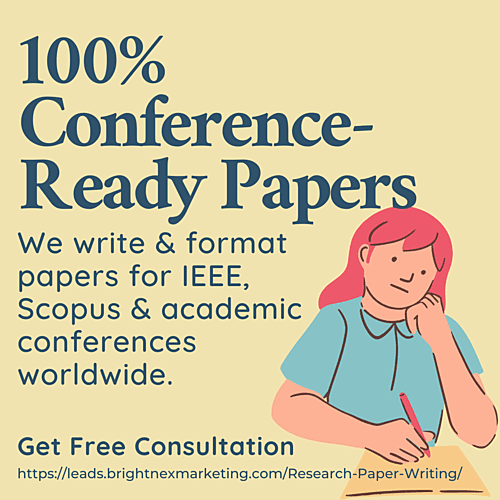You can edit text on your website by double clicking on a text box on your website. Alternatively, when you select a text box a settings menu will appear. your website by double clicking on a text box on your website. Alternatively, when you select a text box.
1. Understand the Purpose and Audience of the Conference
Before you begin, research the conference’s theme, objectives, and target audience. Every conference has its own tone, focus areas, and submission criteria. Knowing these details allows you to tailor your paper accordingly.
Ask yourself:
Who will read and review my paper?
What kind of research is the conference looking for?
Are there formatting or referencing requirements?
This alignment is the first step to ensuring your paper is relevant and impactful.
2. Choose a Strong, Relevant Topic
The topic is your paper’s foundation. A weak or overly broad subject reduces your chances of acceptance. Look for topics that are:
Timely – Address recent developments or emerging trends.
Specific – Avoid generalizations and focus on a narrow aspect of your field.
Research-backed – Ensure you have credible sources and data to support your claims.
Pro Tip: Conferences often prefer topics that challenge conventional thinking or present innovative solutions.
3. Follow the Required Structure
A well-structured paper is easier to read and evaluate. Most conferences follow a format similar to:
Title Page – Include your title, name, and affiliation.
Abstract – A concise summary (150–250 words) of your paper.
Introduction – Present the problem, importance, and research objectives.
Literature Review – Summarize existing research and highlight the gap your paper fills.
Methodology – Describe how the research was conducted.
Results & Discussion – Present findings and explain their significance.
Conclusion – Summarize key points and suggest future research directions.
References – Follow the required citation style (APA, MLA, IEEE, etc.).
Maintaining this structure demonstrates professionalism and increases acceptance chances.
4. Write a Compelling Abstract
Your abstract is the first (and sometimes only) part reviewers read before deciding whether to continue. To write an engaging abstract:
Clearly state the research question and objectives.
Summarize the methodology in 1–2 sentences.
Highlight key findings and their significance.
Keep it concise but impactful.
Remember, how to write a conference paper that gets accepted starts with a powerful first impression—your abstract is that moment.
5. Focus on Clarity and Precision
Complex language doesn’t make you sound smarter; it makes your paper harder to read. Reviewers appreciate clarity, logical flow, and concise explanations. Avoid jargon unless necessary, and always define technical terms.
Example: Instead of saying, “The paradigmatic implications of this theoretical construct are multifaceted,” say, “This theory impacts research in multiple ways.”
6. Provide Original Insights
Conferences value originality. If you’re presenting existing research, bring a new perspective, application, or interpretation. Use case studies, data analysis, or real-world examples to strengthen your argument.
Also, ensure you properly cite all sources to avoid plagiarism—a major reason for rejections.
7. Revise and Proofread Thoroughly
Even a groundbreaking idea can be rejected if it’s full of grammatical errors or inconsistencies.
Steps to follow:
Proofread multiple times.
Use grammar-check tools, but don’t rely on them alone.
Have a peer or mentor review your work.
Ensure formatting matches conference guidelines exactly.
8. Follow the Submission Guidelines Exactly
Every conference has strict rules for submission—word count, font size, referencing style, file format, and deadlines. Ignoring these can lead to immediate disqualification. Double-check everything before submitting.
9. Leverage Professional Help If Needed
If you’re short on time or want to maximize acceptance chances, consider professional services like Pen2Paper—the #1 conference paper writing service. Experienced writers can help you refine your research, meet formatting standards, and ensure your paper meets the highest academic quality.
10. Prepare for Presentation
Acceptance is only step one—you’ll also need to present your paper confidently. Prepare slides, practice speaking clearly, and anticipate possible questions. A strong presentation can further enhance your professional reputation.
Final Thoughts
Learning how to write a conference paper that gets accepted on the first submission is a skill that blends research, structure, clarity, and attention to detail. By understanding your audience, choosing a strong topic, and following submission rules, you significantly increase your chances of success.
Whether you write it yourself or seek expert help, remember: the key is to make your paper relevant, original, and professional. Your next submission could be the one that opens doors to new opportunities, collaborations, and recognition.



